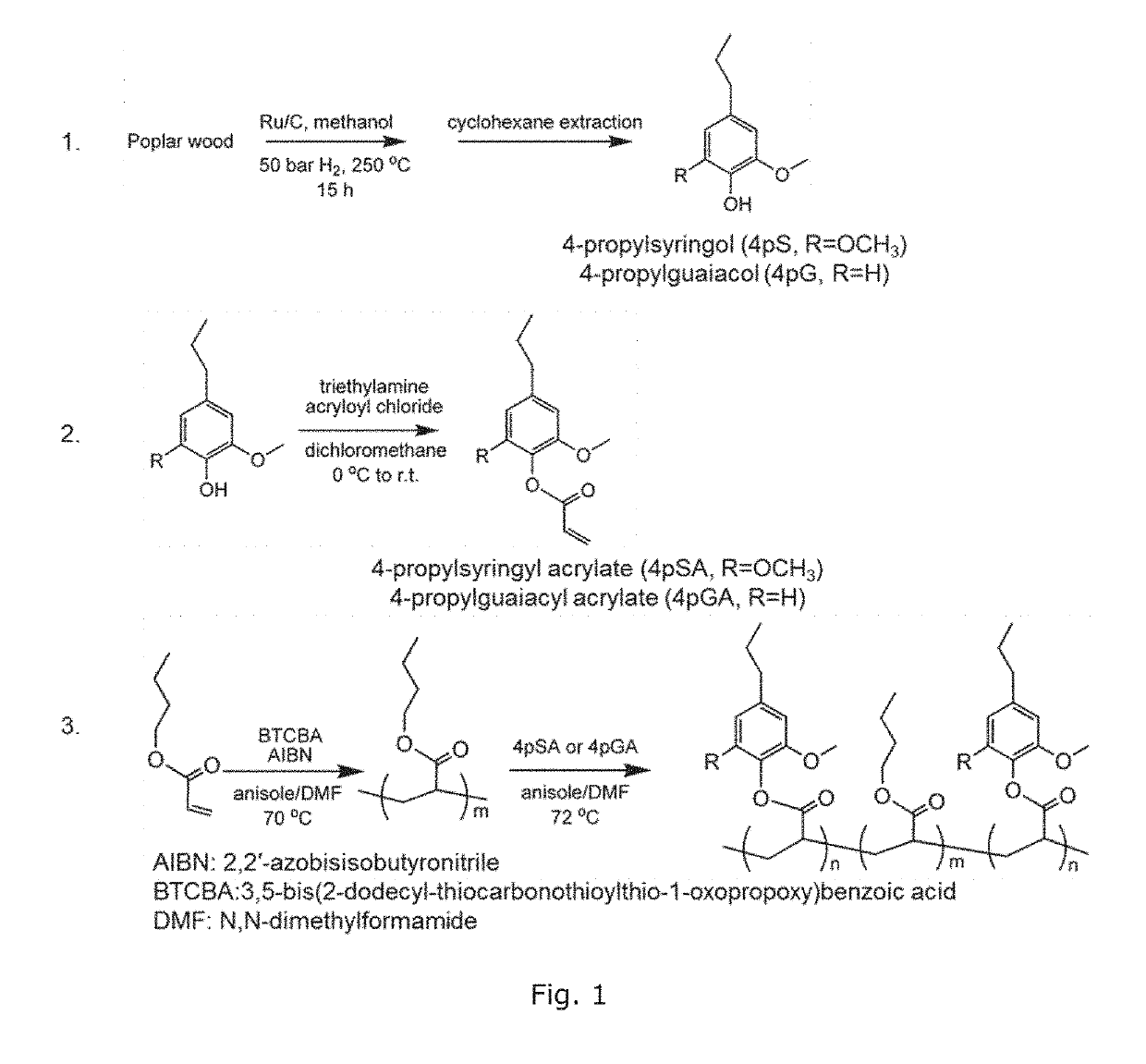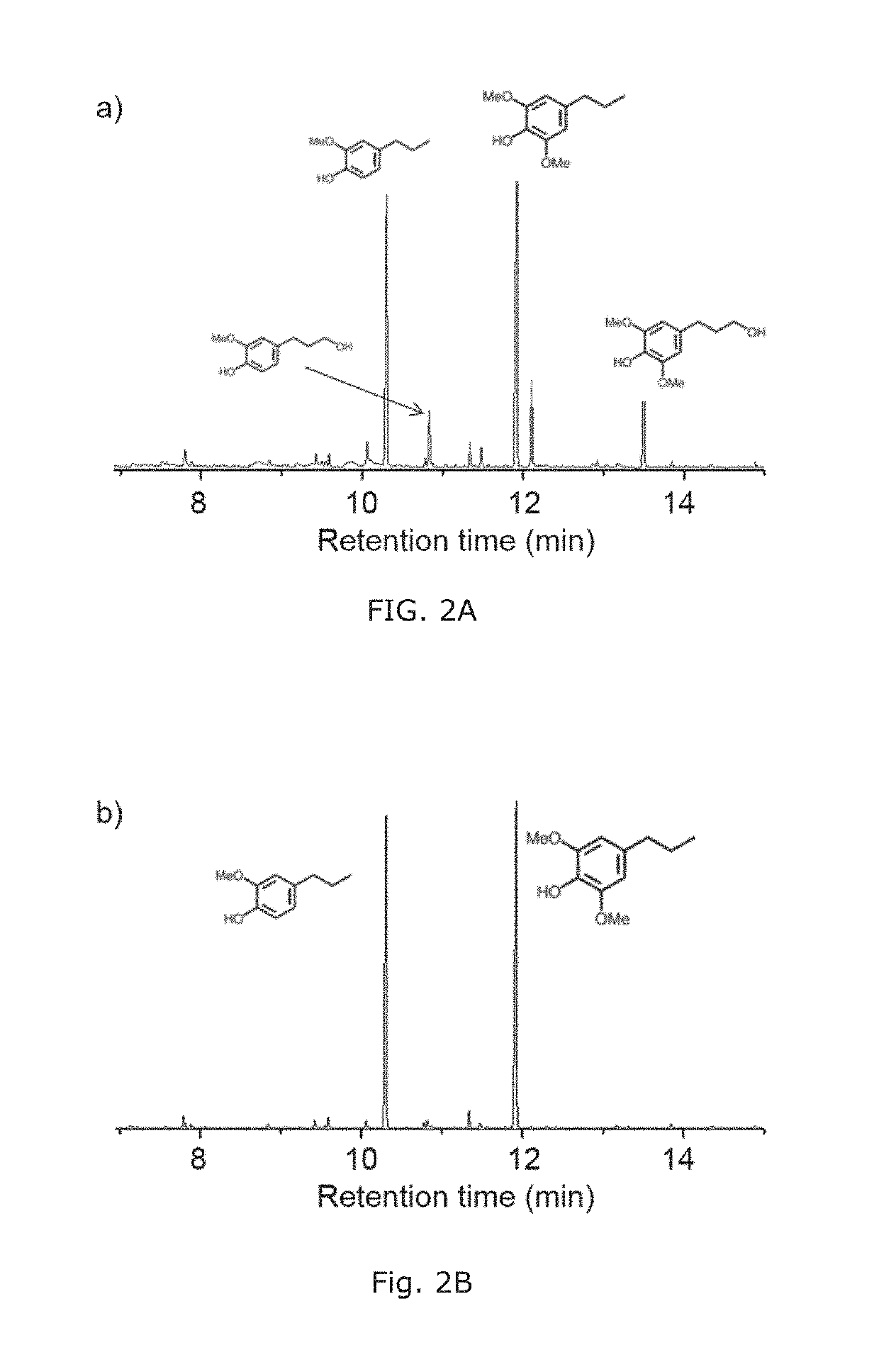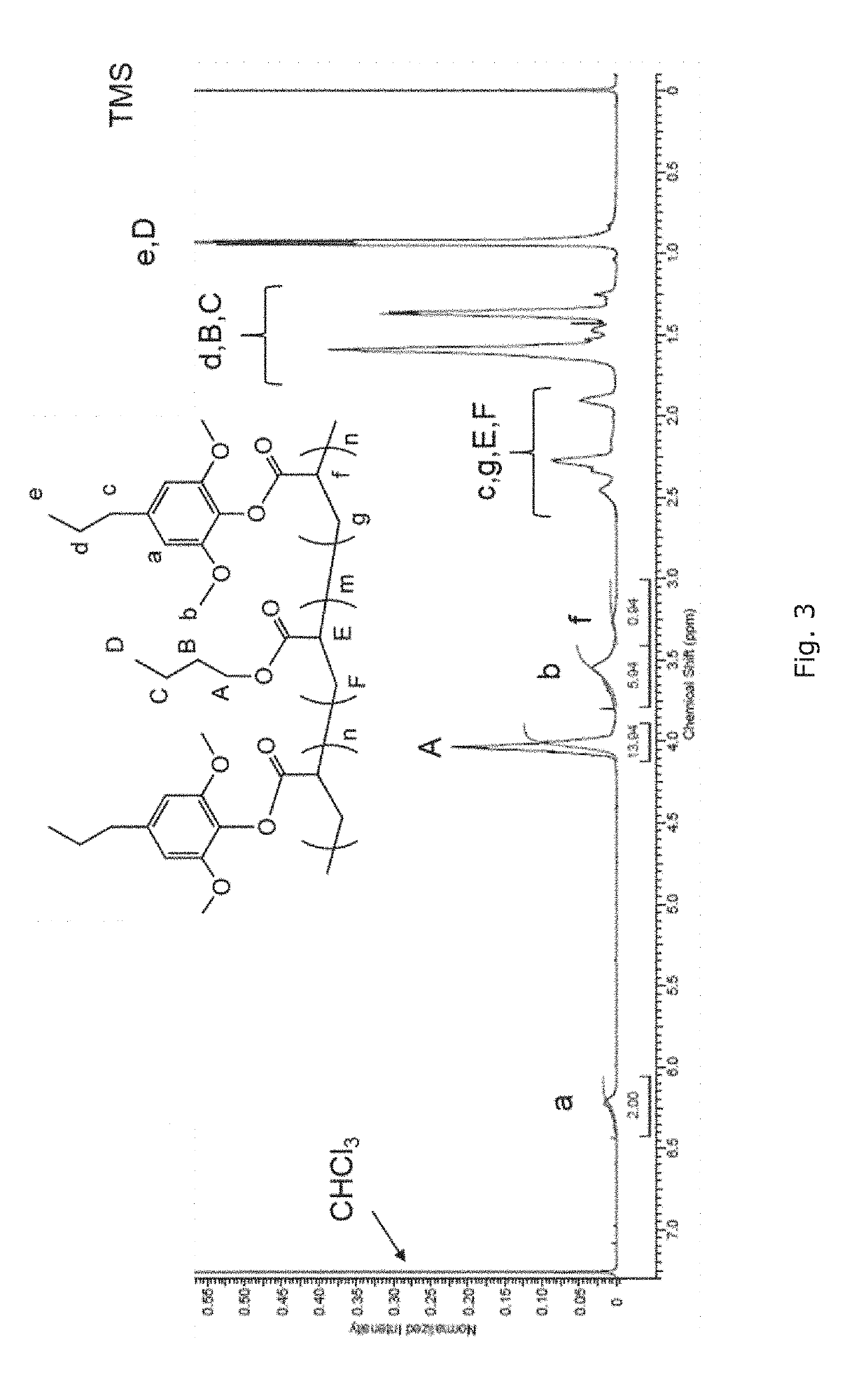Bio-based polymers from raw lignocellulosic biomass
a bio-based polymer and biomass technology, applied in the direction of film/foil adhesives, synthetic resin layered products, non-aqueous electrolytes, etc., can solve the problem of significant gap between deriving well-defined chemicals from raw biomass and directly utilizing these chemicals, and achieve high yield
- Summary
- Abstract
- Description
- Claims
- Application Information
AI Technical Summary
Benefits of technology
Problems solved by technology
Method used
Image
Examples
examples
General Procedure of Lignocellulosic Biomass Depolymerization, Purification, and Characterization.
[0178]FIG. 1 shows a general reaction scheme for depolymerizing poplar wood in methanol with a commercially available Ru / C catalyst, which is effective and selective to C—O bonds cleavage.27,40
[0179]In particular, poplar wood powder (1 g, particle size 2 three times and then pressurized with H2 to a pressure of 40 bar. The reactor was heated to 250° C. and held for 15 h while stirring. After the reaction was completed, the reactor was cooled to room temperature with an external flow of compressed air. The solution containing aromatic monomers was separated from the resultant slurry by filtration. The solid (cellulose, catalyst) was washed with methanol (10 mL, 3 times), and the solution was combined with the previous methanol solution. Methanol was removed using a rotary evaporator at 60° C., and the residue was extracted with cyclohexane (10 mL, 3 times) to obtain pure 4-propylsyringo...
PUM
| Property | Measurement | Unit |
|---|---|---|
| temperature | aaaaa | aaaaa |
| molecular weight | aaaaa | aaaaa |
| temperatures | aaaaa | aaaaa |
Abstract
Description
Claims
Application Information
 Login to View More
Login to View More - R&D
- Intellectual Property
- Life Sciences
- Materials
- Tech Scout
- Unparalleled Data Quality
- Higher Quality Content
- 60% Fewer Hallucinations
Browse by: Latest US Patents, China's latest patents, Technical Efficacy Thesaurus, Application Domain, Technology Topic, Popular Technical Reports.
© 2025 PatSnap. All rights reserved.Legal|Privacy policy|Modern Slavery Act Transparency Statement|Sitemap|About US| Contact US: help@patsnap.com



